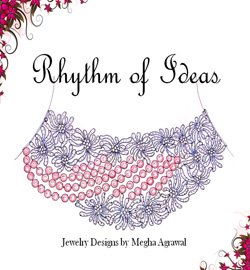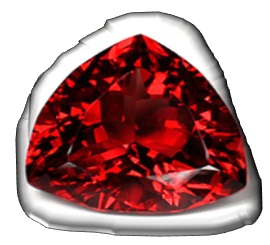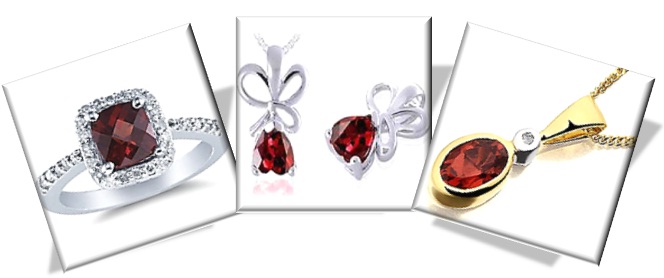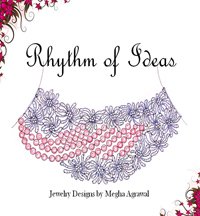Garnet - The January Stone
Garnet is the birthstone for month of January. Its name is derived from the Latin word "Granatus" which means grain or seed, and is called so because of the gemstone's resemblance to a pomegranate seed. Though it appears like a seed, but with Mohs hardness - 6.5 to 7.5 - it is definitely very hard.
Its reference dates back to 3100 B.C., when the Egyptians used this gem as inlays jewelry. Red garnets were known to promote sincerity and relieve anger and discord.
It was believed that, if a well formed lion image is engrave on it, it will protect and preserve health, cure the wearer of all disease, bring honors and guard from all perils in traveling.
As antiquity this gem has always been famous for inner glow and vibrancy. The crown of the German emperor Otto (from 912 A.D. - 973 A.D.) was decorated with the most famous Garnet of all, known as the "Wise One".
The family of this gemstone is one of the most exciting families in the gem world, best known for their blood red color. First ever mined in Sri Lanka, this stone is also found in Africa, Australia, India, Russia, South America and United States.
Color
Different Colors
Hard, durable, often very brilliant, this gem offers great versatility. This diversity is due to unique combinations of elements within each particular gem, such as iron, calcium, and manganese. There are no known enhancements for this gemstone. It occurs in every color of the spectrum, except blue. Depending on variety, quality and size lovely varieties of this gem are available from under $ 25 per carat to more than $11000 per carat.
Although, most commonly known for its red color, it comes in a variety of other hues, including muted yellows, vibrant oranges, rosy pinks, lime greens, and violets. It can be found in almost every color and shade.
Its some shades of red varieties is sometimes confused with Ruby. It is best known in a deep red variety, sometimes with a brownish cast, but it can also be found in fiery orange-red and brilliant wine red shades as well. A non-transparent variety, Grossularite, has a jade-like appearance and may be mistaken for jade when cut into cabochons or carved.
This gem has also been discovered in yellow that changes from red to blue depending upon the light.
Different Types
This gemstone is often mistaken for other (usually more expensive) gems. Almandine and Pyrope are popularly the most common types of this gem, and perhaps the most affordable ones.
Rhodolite is also a popular type and this is usually mined in places like India, Africa, Malaysia and Sri Lanka.
Tsavorite (green in color) is one of the most beautiful. Many people confuse it with an emerald of the finest quality.
There is also a rarer green garnet called Demantoid which costs slightly more than Tsavorite. It is slightly softer than Tsavorite but has more fire. These gems offer exciting alternatives to the person desiring a lovely green gem. While still rare and expensive, these gems are far less expensive than an emerald of comparable quality.
| This gemstone occasionally displays asterism in the form of four-rayed stars. However, Star Garnets are very rare, and generally occur in opaque stones with only a weak asterism effect; thus interest in Star Garnets is limited. |
Uses
It is considered to be one of the most versatile gems in the world market today. Following are its uses:
OrnamentalThis gemstone is quite popularly used in engagement rings, earrings, pendants and all kinds of jewelry thanks to its vivid color and its versatility. Due to its relative abundance compared to other precious stones, these jewels are significantly more affordable and make great gifts.
This stone continues to be the protective gem of journeyers. Gifting it is thought to be the symbol of love and the desire for a loved one's safe travel and speedy homecoming.
No matter what kind or what color of garnet you may prefer, one thing is for sure – this gem is definitely versatile and beautiful. One doesn't need to use a microscope to be able to appreciate the beauty of this stone. The people who were born in January are very lucky to have this jewel as their birthstone.
Industrial Use
Not all of these stones are of gem quality. It can be said that only 2% of the stones mined are of gem quality and rest are industrial grade. Following are its common industrial uses:
- The first documented use of this stone for industrial processes can be traced back to 1878, when Barton Mines Corp. manufactured it as a coating for sandpaper. It is a very effective abrasive and is used commercially for grinding and polishing. Garnet coated sandpaper is one such industrial use.
- Today, aside from being an abrasive, it is also used to cut steel in water jets under high pressure.
- This stone is also used as an indicator for determining the stages of rock formation. It is used in the process of defining the metamorphic stages of rocks. It is also used to detect the formation of igneous rocks.
Things to Remember
In the end, I would suggest to consider following points when thinking of purchasing this gem:
- Concentrate more on quality of the gem and not the size of the gem; this is what really matters the most.
- Confirm its clarity. The general rule is that when you look into the stone with naked eye, there shouldn’t be any inclusions. Stone having inclusions may appear cloudy. Presence of inclusions also indicates that the stone may crack or chip.
Return from Garnet to Birthstone Jewelry
Return from Garnet to Diamond Jewelry Homepage
I hope you'll not mind sharing this on Twitter, Facebook and with everyone else :)
Feel free to share if something is in your mind and want it to be covered on this site.
My Newsletter
Did you liked this article? Sign-up my FREE weekly newsletter and I'll send you more awesome new additions on this website along with latest jewelry happenings around the world, and download my Jewelry Design Album for FREE!
 |
|





